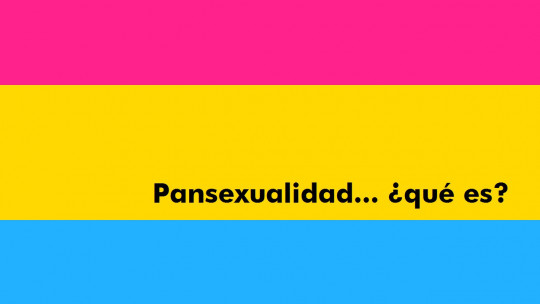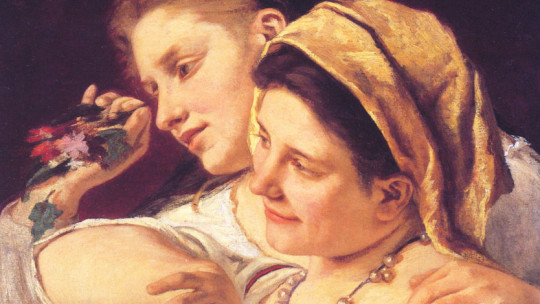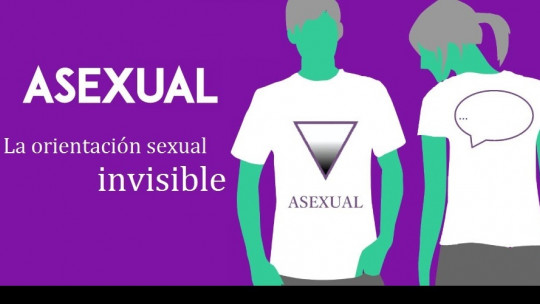
Many cognitive psychologists believe that human beings have a clear tendency to perceive and interpret reality in the simplest way possible.
According to this vision about our mind, we like to classify things into good and bad we judge people very quickly during the first minutes we meet them, and we only take nuances into account in special cases, when the situation requires it.
Kinsey Scale: reframing our sexual orientation
When we consider the sexual condition of people, we take into account two categories: homosexuality and heterosexuality, which can be combined to form bisexuality. However…To what extent is this way of classifying sexual tendencies faithful to reality? Is there such a clear and emphatic differentiation between homosexuality and heterosexuality?
A man called Alfred Kinsey He broke this dualistic conception of sexual orientations by proposing a model according to which there are many intermediate degrees between heterosexuality and homosexuality. This graduality was reflected in what is known today as Kinsey scale

Questioning dichotomous sexuality
Feminism and gender studies associated with anthropology strongly defend the idea that, historically, sexual orientation has been understood as something understandable from two positions: heterosexuality and homosexuality, one being the denial of the other. These two sexual options would be inventions, artifacts created by culture and that are not supported by biology.
However, during the first half of the 20th century, the biologist and sexologist Alfred Kinsey inflicted serious wounds on this dichotomous conception of sexuality. The motives? For 15 years, he conducted an extensive study that led him to conclude that the ideas of homosexual, bisexual and heterosexual are too narrow and limiting
Simply put, the people he included in his research did not easily fit into the schemes of heterosexuality: intermediate states in sexual orientation were much more frequent than expected. Thus, according to Kinsey, there is a whole spectrum of sexual orientation, a scale of various degrees ranging from pure heterosexuality to pure homosexuality, passing through several intermediate categories.
In short, the Kinsey scale shattered qualitative classification to delve into a quantitative description in which things are measured as temperature is measured with a thermometer. The idea is that We can all have a bisexual part, more or less evident and that, rather than defining our identity, it is a simple preference with thresholds or limits that are not always very clear.
The history of the Kinsey scale
If this conception of sexuality is provocative today, You can imagine what the defense of the Kinsey scale meant during the 40s and 50s The study, which was based on thousands of questionnaires given to a wide variety of men and women, sparked great controversy and aroused fierce opposition from conservative institutions. However, precisely that caused his ideas to spread rapidly throughout the world, and his writings and reflections were translated into many languages.
The so-called Kinsey report, divided into the books Sexual Behavior of Men (1948) and Sexual Behavior of Women (1953), provided data that at that time questioned what was known about human sexuality and the very nature of gender.
Based on the information given by 6,300 men and 5,940 women, Kinsey concluded that pure heterosexuality is extremely rare or almost non-existent, and that it should only be taken as an abstract concept that served to construct a scale with two extremes. The same was true of pure homosexuality, although this idea was not so unacceptable for obvious reasons.
This meant that male and female identity had been constructed as part of a fiction, and that many behaviors that were considered “deviant” were, in fact, normal.
What is this scale like?
The scale devised by Kinsley has 7 levels from heterosexuality to homosexuality and includes the category in which people who do not experiment with sexuality would go.
These grades are the following:
-
Exclusively heterosexual
-
Predominantly heterosexual, incidentally homosexual.
-
Predominantly heterosexual, but more than incidentally homosexual.
-
Equally homosexual and heterosexual.
-
Predominantly homosexual, rather than incidentally heterosexual.
-
Predominantly homosexual, incidentally heterosexual.
-
Exclusively homosexual.
X. No sexual relations.
Another conception of the human mind
The Kinsey scale once offered a different perspective on what the human mind is, specifically in relation to sexuality. Traditionally the sexual division of labor and gender roles have favored a very dichotomous view of what it means to be a man and a woman and this line of research called into question this very closed classification.
For this reason, over the years, gender studies have taken the influence of this scale to point out to what extent heteronormativity, which places heterosexuality at the center of what is considered normal, is a social construction that is oversimplifying and unjustified, which serves to exert social pressure on minorities located outside this normalized sexual orientation.
The Kinsey scale, today
Kinsey did not make a scale of seven degrees because he believed that this number of steps reflected the functioning of sexuality, but because I believed it was a good way to measure something that is actually fluid and has no discontinuities
That is why his work had a strong impact on Western philosophy, changing our way of understanding sexual orientations and having a positive impact on movements for equality and the fight against discrimination against homosexual people. However, the debate about the nature of sexual orientations and whether it is practical to understand them as a continuum or as narrow categories is still very much alive.
In fact, this debate has not been a purely scientific one, since the social and political implications of the Kinsey sexuality scale mean that it is seen as an ideological tool.
Conservatives consider it to be a threat to the values of the traditional nuclear family and a tool of gender ideology (although in reality the Kinsey scale can be defended without ascribing to this scheme of thought) and LGTBI groups see in it a good conceptual framework from which sexuality can be studied in a less rigid way than usual.
Modifying the approach to the study of homosexuality
Furthermore, this scale of sexual orientations downplays the idea of pure homosexuality and heterosexuality, reducing them to entelechys, which makes the social pressure to fit into these two categories decrease If anything, the Kinsey scale has helped set a precedent; The phenomenon to be studied is no longer homosexuality, seen as an anomaly or a deviation from what was considered “natural.”
Now what is being investigated is the way in which homosexuality and heterosexuality interact, the relationship between the two. Before, only a rarity was studied, but today what we try to understand is a continuum with two poles.
In any case, it must be clear that Kinsey’s research was full of limitations and was carried out using methodologies that would be rejected today; This is partly normal, given that this researcher was a child of his time, and many of the debates that have served to improve the quality of studies in behavioral sciences had not yet taken place when he developed the he scale. What is still valid today is the idea that sexual orientations cannot be categorized into hermetic categories, and that their limits are diffuse and to a certain extent unpredictable.








